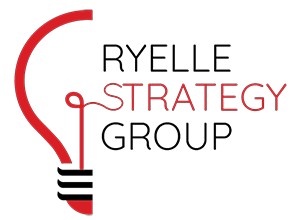In today’s rapidly changing business landscape, enterprise risk management (ERM) has never been more crucial. Organizations face a growing array of challenges that demand innovative approaches to managing risks. While traditional risks like market fluctuations and regulatory changes persist, new and complex threats are emerging, reshaping how organizations must strategize and respond. Three significant trends are shaping the current ERM landscape: the escalating threats in cybersecurity, the rising importance of psychologically safe organizational cultures, and the organizational impact of climate change.
Cybersecurity: The Escalating Battle in the Digital Age
In today’s digital world, cybersecurity has become a top priority in risk management. The increasing sophistication of cyberattacks and the expanding surface area of vulnerabilities—driven by trends like remote work, cloud computing, and the Internet of Things—have made cybersecurity a critical concern for organizations of all sizes.
The consequences of a cyber breach can be devastating, ranging from financial losses and operational disruptions to severe reputational damage. To mitigate these risks, organizations must adopt a more proactive and comprehensive approach to cybersecurity. This involves not only strengthening technological defenses but also fostering a culture of cyber vigilance among employees.
Leading organizations are leveraging advanced technologies like artificial intelligence and machine learning to predict and detect cyber threats. They are also implementing continuous monitoring systems and incident response plans to ensure swift action when breaches occur. However, technology alone is not enough. Many organizations are investing in cybersecurity training programs to build awareness and resilience among their staff, recognizing that human error remains one of the most significant vulnerabilities.
Psychologically Safe Cultures: The Human Side of Risk Management
Now more than ever, fostering psychologically safe cultures has become crucial for organizations. Psychologically safe workplaces—where employees feel comfortable expressing ideas, reporting concerns, and acknowledging mistakes without fear of retribution—are vital for effective risk management. Without such environments, organizations expose themselves to missed opportunities, whistleblowing, costly lawsuits, and high staff turnover as employees leave for more supportive workplaces.
To address this, the Canadian Standards Association (CSA) introduced the CSA Standard for Psychologically Safe Workplaces (CSA Z1003-13/BNQ 9700-803/2013), offering a framework for creating and maintaining psychologically safe environments. This standard emphasizes the need for policies that support mental health, reduce stigma, and promote a culture of openness and trust.
Psychological safety encourages employees to speak up about potential risks and contribute innovative ideas, enhancing the organization’s ability to adapt to emerging threats. Conversely, cultures that suppress communication can increase risk, as employees may stay silent about critical issues. By adopting the CSA Standard and prioritizing psychological safety, organizations not only improve employee well-being but also strengthen their overall risk management strategy, making human factors a key differentiator in today’s business landscape.
Climate Change: From Environmental to Business Imperative
Climate change has emerged as a central issue for businesses across all sectors. The increased frequency and intensity of natural disasters, coupled with shifting regulatory landscapes and consumer expectations, are compelling organizations to rethink their risk management strategies.
Organizations must assess the direct risks that climate change poses to their operations—whether it’s the threat of extreme weather events disrupting supply chains or changing regulations increasing operational costs. With record-breaking heatwaves, urban flooding, and wildfires making headlines daily, the urgency to address these risks has never been clearer. Additionally, the reputational risks associated with environmental impact are growing, as clients and employees increasingly hold organizations accountable for their environmental footprints.
In response, forward-thinking organizations are integrating climate risk assessments into their broader ERM frameworks. This includes adopting scenario planning that accounts for different climate futures, investing in sustainable practices, and developing resilience strategies that go beyond mere compliance. Organizations that proactively manage climate-related risks will not only safeguard their operations but also position themselves as leaders in a rapidly changing world.
The Integrated Approach: A New Paradigm in ERM
What ties these emerging trends together is the growing recognition that risk management must be integrated across all levels of an organization. Cybersecurity, psychological safety, and climate change are interconnected aspects of a broader risk landscape that demands a holistic approach.
Forward-looking organizations are breaking down silos and fostering collaboration to create a unified risk management strategy. This approach enhances the ability to identify and mitigate risks while ensuring alignment with broader business objectives.
Organizations that embrace a proactive, integrated approach—considering climate impact, fostering psychological safety, and strengthening cybersecurity—will be better positioned to navigate future uncertainties. These trends are truly redefining what it means to manage risk in the modern enterprise.




